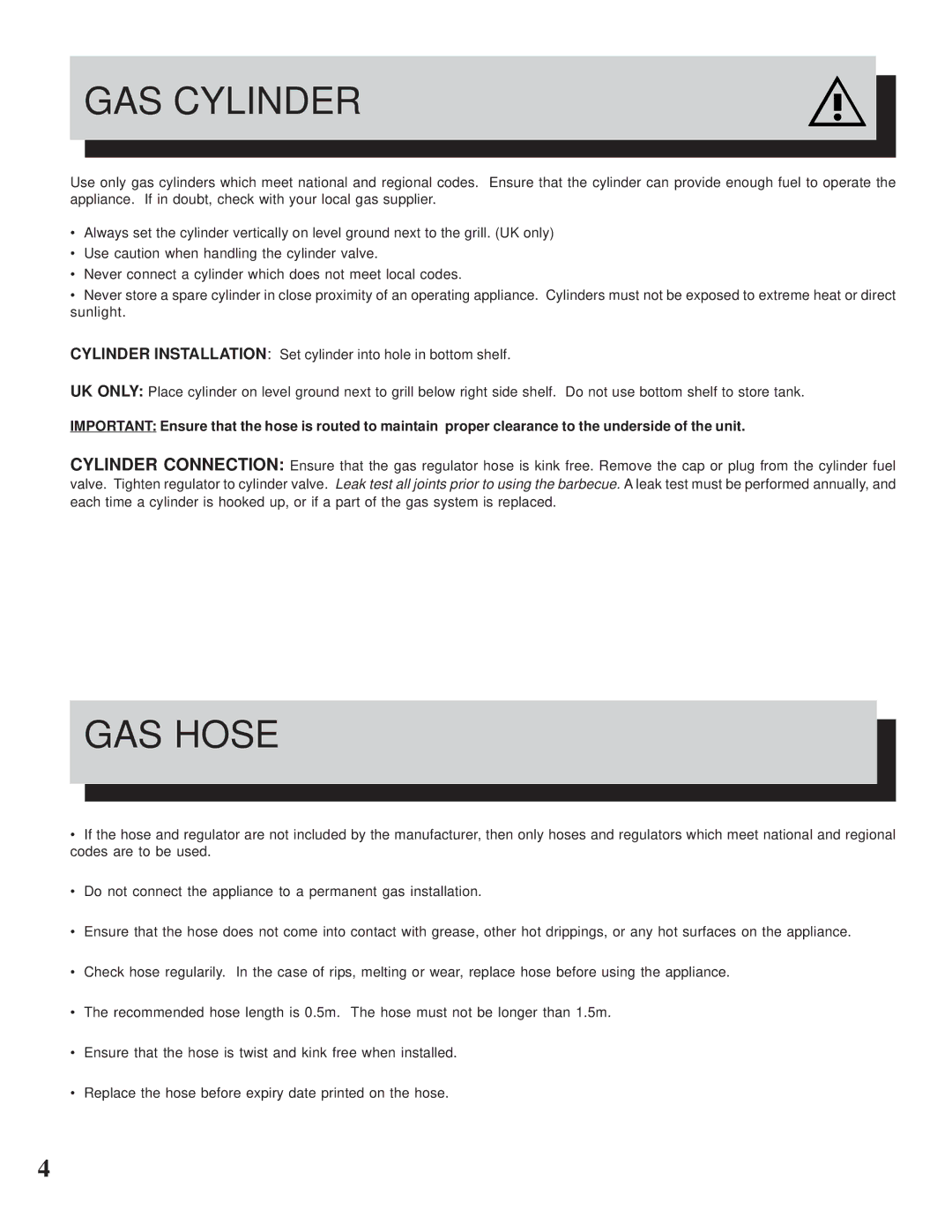
GAS CYLINDER
Use only gas cylinders which meet national and regional codes. Ensure that the cylinder can provide enough fuel to operate the appliance. If in doubt, check with your local gas supplier.
•Always set the cylinder vertically on level ground next to the grill. (UK only)
•Use caution when handling the cylinder valve.
•Never connect a cylinder which does not meet local codes.
•Never store a spare cylinder in close proximity of an operating appliance. Cylinders must not be exposed to extreme heat or direct sunlight.
CYLINDER INSTALLATION: Set cylinder into hole in bottom shelf.
UK ONLY: Place cylinder on level ground next to grill below right side shelf. Do not use bottom shelf to store tank.
IMPORTANT: Ensure that the hose is routed to maintain proper clearance to the underside of the unit.
CYLINDER CONNECTION: Ensure that the gas regulator hose is kink free. Remove the cap or plug from the cylinder fuel valve. Tighten regulator to cylinder valve. Leak test all joints prior to using the barbecue. A leak test must be performed annually, and each time a cylinder is hooked up, or if a part of the gas system is replaced.
GAS HOSE
•If the hose and regulator are not included by the manufacturer, then only hoses and regulators which meet national and regional codes are to be used.
•Do not connect the appliance to a permanent gas installation.
•Ensure that the hose does not come into contact with grease, other hot drippings, or any hot surfaces on the appliance.
•Check hose regularily. In the case of rips, melting or wear, replace hose before using the appliance.
•The recommended hose length is 0.5m. The hose must not be longer than 1.5m.
•Ensure that the hose is twist and kink free when installed.
•Replace the hose before expiry date printed on the hose.
4
